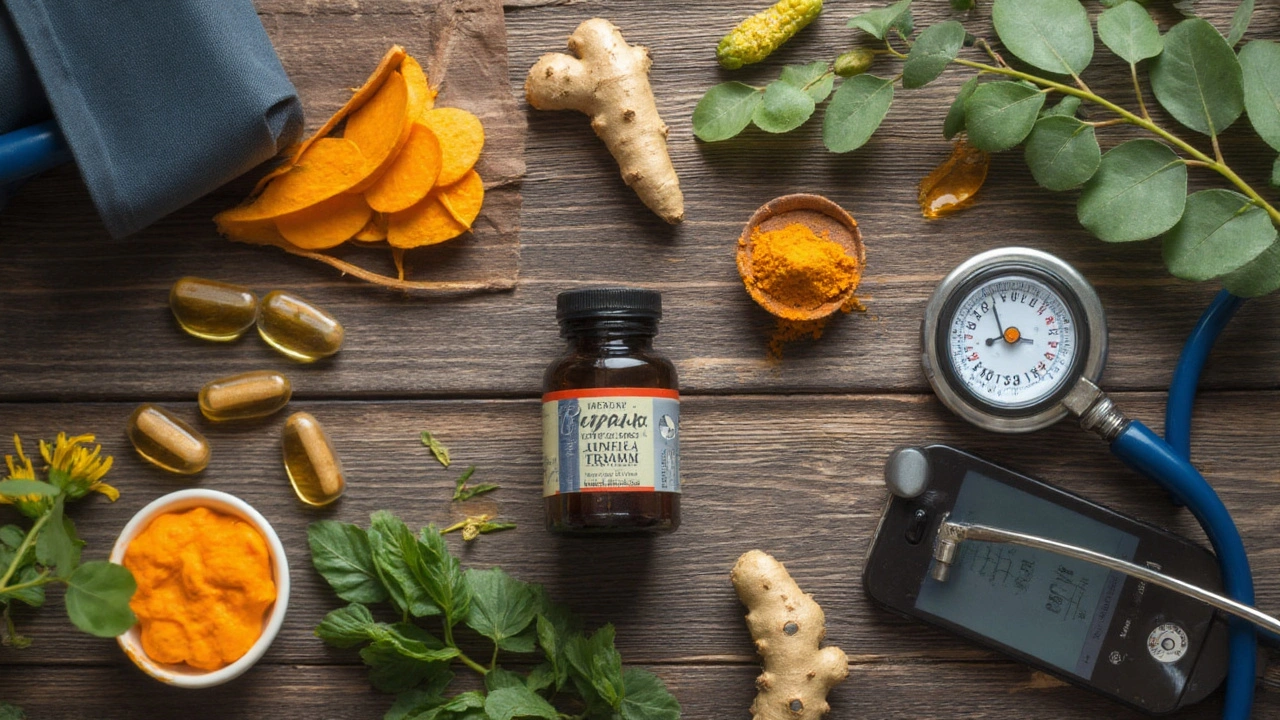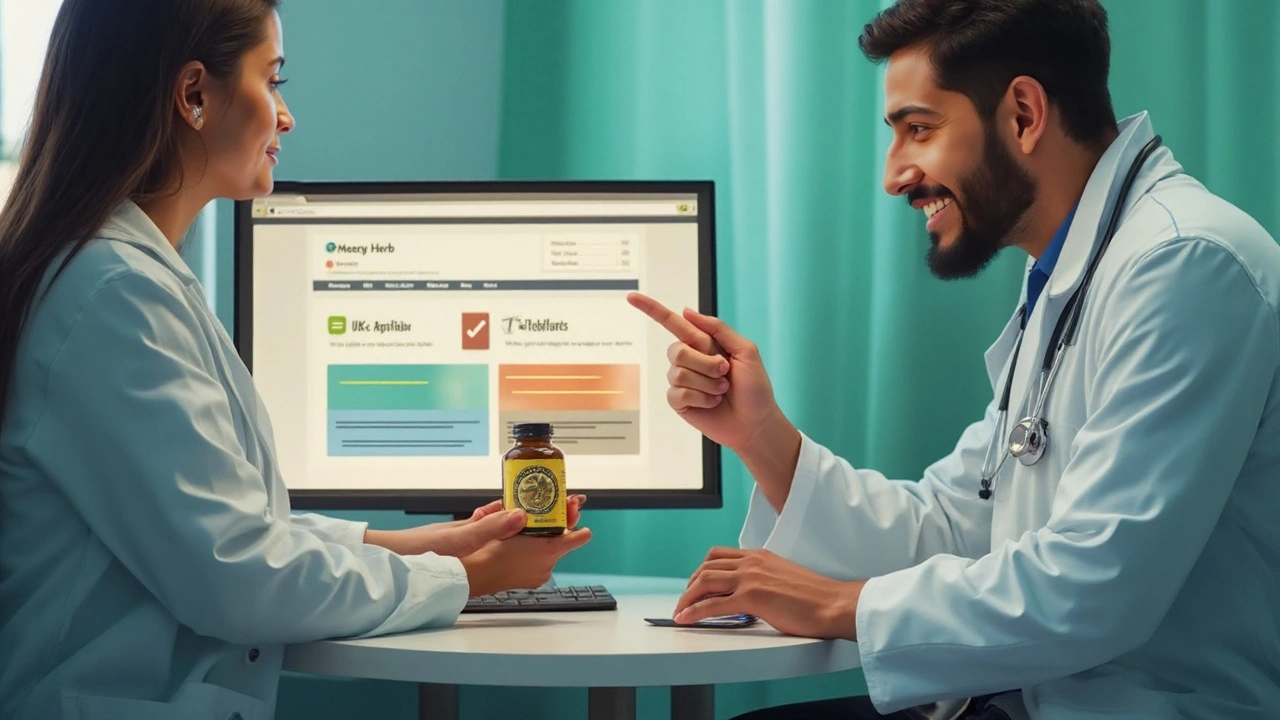Big promises sell bottles, not better health. “Say goodbye to health issues” sounds lovely, but no pill-herbal or otherwise-can erase every problem. If you’re eyeing Mercury Herb because you want a simpler path to feeling well, here’s the straight talk: what it is, what we actually know, how to check quality, and how to use any supplement smartly and safely in 2025-especially if you’re in the UK.
- TL;DR: No supplement cures all ills; judge Mercury Herb by its ingredients, evidence, and testing-never by hype.
- Evidence: I couldn’t find robust, peer-reviewed clinical trials on “Mercury Herb” as a branded formula; claims should be backed by ingredient-level studies at effective doses.
- Safety: Watch for interactions, contamination, and allergy risks. In the UK, report adverse effects through the MHRA Yellow Card scheme.
- How to try it: Set a clear health goal, verify third-party testing and a recent Certificate of Analysis, start low, and track outcomes for 8-12 weeks.
- Better plan: Fix basics first-sleep, protein, fibre, vitamin D (UK), movement. Consider well-studied options for specific goals before new “revolutionary” blends.
What Mercury Herb Is (and What It Isn’t)
Dietary supplements in the UK are food products, not medicines. That means they can’t claim to treat or cure diseases, and they don’t go through the same pre-approval testing that medicines do. If a product promises to “say goodbye to health issues,” that’s advertising language, not clinical proof. Any brand called “Mercury Herb” is a marketing label. What matters is the actual ingredient list, the doses, and whether those doses match what’s been tested in people.
First, a quick sanity check. The name “Mercury Herb” may raise eyebrows-mercury is a toxic heavy metal. A supplement should never contain mercury. Check the label and lab tests; if a brand can’t show independent testing for heavy metals (lead, arsenic, cadmium, mercury), walk away.
What would make Mercury Herb credible? Three things:
- Transparency: Full ingredient list with exact doses, plant parts, and standardisation (e.g., withanolides 5% in Ashwagandha).
- Evidence: Human trials on those ingredients at similar doses for the specific claim (e.g., “reduces joint pain” vs. vague “supports health”).
- Quality control: Independent lab testing showing purity, identity, and potency; batch-specific Certificates of Analysis (CoAs).
Where does the current evidence stand? There are no widely recognised peer‑reviewed clinical trials on a branded formula called “Mercury Herb” that I can point to as of August 2025. That’s not unusual-many blends aren’t studied as whole products. So you need to judge by the ingredients inside and whether those have been studied in humans.
Here’s how to translate bold claims into what would count as proof:
| Marketing Claim | Real-World Proof You’d Want | What to Check on the Label/Docs | Risk If Missing |
|---|---|---|---|
| “Supports immunity” | Randomised controlled trials (RCTs) showing fewer infections or shorter duration | Specific immune-related ingredients (e.g., vitamin D, elderberry extract) at studied doses | Low to moderate-mostly wasted money |
| “Improves energy” | Human studies measuring fatigue scores or exercise performance improvements | Clear actives (e.g., CoQ10, B12 if deficient), dose matches trial ranges | Moderate-stimulant side effects if spiked or overdosed |
| “Balances hormones” | Human data on specific endpoints (e.g., cycle regularity, hot flush frequency) | Named botanicals (e.g., maca, ashwagandha) with standardisation and warnings | Moderate to high-interactions, pregnancy risks |
| “Detoxifies” | Biomarker changes (e.g., liver enzymes) in controlled studies | No vague blends; look for NAC, milk thistle standardisation, realistic claims | High for nonsense; possible liver strain with unknown mixes |
| “Joint relief” | RCTs showing pain/function improvement (e.g., WOMAC scores) | Curcumin with piperine or enhanced forms at ≥500-1000 mg/day equivalent | Moderate-GI upset, drug interactions |
Authoritative bodies worth listening to: NHS guidance on vitamins and minerals (regularly updated), the MHRA (safety alerts and Yellow Card reporting), the UK Food Standards Agency (labelling and maximum safe levels), and Cochrane reviews for ingredient-level evidence. They won’t weigh in on every brand, but they set the bar for what “good evidence” looks like.
Pricing check: in the UK, multi-ingredient “revolutionary” blends often run £25-£60 per month. Price doesn’t correlate with quality-lab data does.

How to Evaluate (and Use) Mercury Herb Safely: A Step‑by‑Step Playbook
Here’s the simple buyer’s guide I use with any supplement. It’s quick, practical, and keeps you out of trouble.
- Pick one clear goal. “Less brain fog,” “fewer night sweats,” or “less knee pain.” If you can’t measure it, you can’t judge if Mercury Herb is doing anything. Write down a baseline (e.g., pain 6/10, 3 bad nights/week).
- Read the label like a hawk. You want full ingredient names, plant parts (root/leaf), standardisation (e.g., 5% withanolides), and exact milligrams per serving. “Proprietary blend” without amounts is a red flag.
- Demand proof of testing. Ask the brand for a batch-specific Certificate of Analysis from an accredited lab. It should cover identity, potency, microbes, and heavy metals (including mercury). No CoA? No purchase.
- Check interactions. If you take medicines (especially blood thinners, thyroid meds, SSRIs, immunosuppressants), talk to a pharmacist or GP first. Botanicals like ginkgo, St John’s wort, and curcumin can alter how drugs work.
- Know your stop rules. If you get hives, chest tightness, severe dizziness, or liver warning signs (dark urine, yellowing skin/eyes), stop and seek care. Report adverse events to the MHRA Yellow Card scheme.
- Start low, go slow. Begin at the lowest suggested dose for 3-5 days to test tolerance, then step up. Take with food unless told otherwise. Avoid stacking new supplements-introduce one at a time.
- Track for 8-12 weeks. Note weekly changes in your goal (sleep, mood, pain). If nothing changes by 12 weeks, it’s probably not worth it.
- Don’t mix with high-risk states. Avoid experimental blends if you’re pregnant, breastfeeding, preparing for surgery (stop herbs 2 weeks prior), have liver/kidney disease, or a history of severe allergies.
Quick dosing reality check: A “serving size” is marketing, not science. Match doses to human studies on the actual ingredients. If Mercury Herb hides behind a proprietary blend, you can’t do that matching-so you can’t know if the dose is therapeutic or pixie dust.
Quality signals that matter:
- Third‑party certifications: Informed‑Sport or Informed‑Choice (good for athletes), BSCG Certified, or a genuine, recent CoA from an ISO‑accredited lab. USP Verified is more common in the US, but the standard is useful.
- Clear origin and manufacturing: Named manufacturer, UK/EU GMP or equivalent, allergen statements.
- Plain English claims: “Supports joint comfort” with dosage guidance beats “Goodbye to pain forever.” Hyperbole often hides weak dosing.
Red flags to walk away from:
- “Cures,” “treats,” or “prevents” disease claims.
- No contact details, no CoA, or fake-looking lab reports (mismatched batch numbers, old dates, no lab accreditation).
- Undisclosed stimulants or ingredients ending in “-amine” pushed as “natural focus boosters.”
- Auto-ship traps with deep discount pop-ups and tiny-print terms.
Cost maths tip: Calculate cost per day that delivers the studied dose of the key active. If Mercury Herb gives you 100 mg curcumin but studies use 500-1000 mg of enhanced curcumin, you’d need 5-10 capsules/day to match-making the “cheap” bottle expensive and possibly unsafe.
UK rules to know in 2025:
- Supplements are regulated as foods. Brands must follow labelling law and cannot make unauthorised health or medical claims.
- The MHRA handles safety issues and the Yellow Card scheme for reporting problems with medicines and herbal products.
- The Advertising Standards Authority has clamped down on disease claims and influencer ads that oversell results. If the pitch sounds like a miracle, it probably won’t pass ASA muster.
How to set yourself up for success if you try Mercury Herb:
- Pick one goal and one product at a time.
- Take a photo of the label and batch number before you start.
- Set a calendar reminder to reassess at week 4 and week 12.
- Keep a simple 1-10 score for your symptom each week.
- If you stop, note why (side effect, no benefit, cost) so you don’t repeat mistakes later.

Smarter Options, Realistic Expectations, and Your Questions Answered
Before adding any new blend, shore up the basics that move the needle most:
- Vitamin D: In the UK, many adults benefit from 10 µg (400 IU) daily in autumn/winter or year-round if indoors or darker-skinned. The NHS backs this guidance.
- Fibre: Aim for ~30 g/day. If you fall short, consider psyllium husk. It helps with digestion and cholesterol, and the evidence is solid.
- Protein: 1.2-1.6 g/kg/day can help with energy and satiety, especially if you’re active or 40+.
- Movement and sleep: 7-9 hours and regular walking or resistance training beat any capsule for energy and mood.
If your goal is specific, look at options with stronger human data:
- Stress and mild anxiety: Standardised Ashwagandha (e.g., 300-600 mg/day of root extract with known withanolide content) has RCT support. Check for GI upset and thyroid interactions.
- Joint comfort: Curcumin with bioavailability enhancers can help some people; watch for anticoagulant interactions.
- Brain fog from low B12: If you’re vegan or older, check B12 status. Correcting deficiency beats blends every time.
- IBS symptoms: Certain probiotic strains (not just “probiotics”) have evidence. Choose products naming the strain (e.g., B. infantis 35624) and dose.
Where does that leave Mercury Herb? If it lists credible ingredients at studied doses, shows clean CoAs, and matches your goal, it could be worth a 12‑week trial. If it hides blends, shouts miracles, and dodges testing, you’ve got better places to spend your money.
Mini‑FAQ
- Does Mercury Herb contain actual mercury? It shouldn’t. Heavy metal contamination is a known risk in some herbal products, which is why you want batch‑specific lab testing. If the brand won’t share it, skip it.
- Is Mercury Herb safe to take with my meds? Maybe not. Botanicals can interact with blood thinners, thyroid meds, antidepressants, and more. Ask a pharmacist or GP-and bring the exact label.
- Can I take it while pregnant or breastfeeding? Best to avoid new multi‑herb blends unless your midwife or GP says otherwise. Safety data in pregnancy is often limited.
- How long until I feel anything? If it helps, most people notice within 2-6 weeks. If nothing by 12 weeks at a proper dose, move on.
- How do I report a bad reaction in the UK? Use the MHRA Yellow Card scheme. Keep the bottle and batch number.
- Why do influencers rave about it? Incentives. Look for independent reviews that show labels, doses, and lab tests-not just “I feel amazing” after two days.
Quick comparison choices
- If your main goal is energy: Check sleep, iron/B12 status, and caffeine timing before blends.
- If your main goal is stress: Try a standardised Ashwagandha product from an Informed‑Choice/USP‑style tested brand; consider CBT/MBSR for durable results.
- If your main goal is joints: Curcumin with a bioavailability enhancer, or a trial of omega‑3s if your diet is low in oily fish.
- If your main goal is “general wellness”: Vitamin D (seasonal), fibre, and a varied diet deliver more per pound than most mystery blends.
Checklists you can copy
Label and lab test checklist:
- Full ingredient list with exact mg
- Plant part and standardisation stated
- Serving size and daily dose match evidence
- Batch-specific CoA covering identity, potency, microbes, and heavy metals
- Manufactured under GMP with manufacturer named
Red flag checklist:
- Disease-cure language
- No third‑party testing or stale CoAs (>12 months old)
- “Proprietary blend” without amounts
- Pressure sales (countdowns, auto‑ship traps)
- Vague “detox” or “reset” promises
Next steps by persona
- Busy parent with low energy: Check sleep and iron/B12 status first; try vitamin D if low exposure; only then consider a clean, simple energy‑focused formula at studied doses.
- Runner or gym‑goer: Look for Informed‑Sport certification to avoid contamination; match doses to research; track performance metrics, not vibes.
- Over‑50 on several meds: Book a pharmacist review before any herb; interactions are common. Keep a med/supplement list updated.
- Vegan: Prioritise B12, iodine, omega‑3 from algae, vitamin D. Mystery blends usually won’t fix gaps in fundamentals.
- Perimenopause: Consider evidence-based options (e.g., CBT for hot flush coping, sleep hygiene, targeted supplements like magnesium glycinate for sleep), and discuss with your GP.
Troubleshooting
- Stomach upset: Take with food or split the dose. If it persists, stop.
- Headaches or jitters: Check for hidden caffeine or stimulants; reduce dose or discontinue.
- No benefit by week 12: Verify dose vs evidence, or cut your losses and switch strategy.
- Weird aftertaste or colour changes: Could signal poor quality or oxidation-don’t use.
Final thought: health doesn’t come in a single capsule, but smart choices do save time, money, and stress. If Mercury Herb earns its place on your shelf with honest labels and real testing-and it matches your goal-it’s worth a careful trial. If not, you’ve got safer, better‑evidenced paths to the same outcome.
